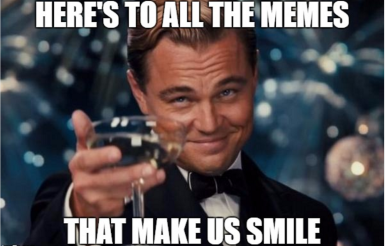

J&C Blog
Find all the latest marketing trends on the J&C Blog.

Find all the latest marketing trends on the J&C Blog.
If seeing is believing, then it only follows that visuals play a vital role in communication. That’s especially true as you decide on what types content marketing you are going to include in your content marketing strategy.
According to HubSpot, content marketing posts presented with relevant imagery get 94% more views than content without visuals. But the value of powerful pictures as a type of content goes much further.
The human brain can process an image in just a few milliseconds, conveying a great amount of complex information very quickly. The right picture has the ability to spark someone’s interest and convince a viewer that anything from an ad for a product to a television show is worth exploring. This is why Netflix began gathering consumer research specifically about the images on its service. Research indicated that images not only prompted users to watch one show over another, but they accounted for 82% of viewers time spent browsing (in contrast to the 1.8 seconds people spent reading movie titles).
Images mattered almost four times more than the text describing the storyline.
Now, Netflix most likely is still conducting its research on the millions of human guinea pigs that make up its customer base and they aren’t likely to supply their data any time soon, so the question is left to marketers – what types of visual content should we use?
1. PhotographyA picture is worth a thousand words, which means photos are among the most engaging content imagery forms available. This content format should be utilized in almost every form of collateral, including eBooks, social posts, blog posts and presentations.
When to use it:
Formats include JPEG, TIFF and PNG.

The term “meme” isn’t a modern phenomenon; it’s actually been around for a while. The Content Marketing Institute notes that the term was coined by Richard Dawkins in 1976 and was intended to convey a package of culture. Before the Internet, this meant styles, concepts and behaviors. Today a meme is a type of content imagery that uses juxtaposition or caricature to draw attention to the point it’s trying to make.
When to use them:
Typical standards:
The media has used comics to express ideas for more than 100 years. Often cartoons depict images of situations hyper-focused or caricatured to emphasize a point and draw viewers’ attention.
When to use them:
Typical standards:
Infographics are the visual representation of a situation or data and present information in quick, digestible bites. A good rule of thumb to follow: A viewer should be able to grasp the concept, information and story of your infographic within seven seconds.
Remember, not every visual representation of information is an infographic; more complex visuals include information graphics, data visualization or a rendering.
When to use them:
Typical standards:
Information graphics or data visualizations are imagery used to convey complex ideas in a more engaging, graphic format to help understanding. Unlike infographics, information graphics or data visualizations can go into much more detail to promote comprehension.
When to use them:
The best image format to use is a JPEG.
Video marketing is one of the fastest-growing areas for desktop and mobile usage. It has the ability to create a more dynamic experience than other content formats because it takes advantage of more than two senses.
When to use it:
Typical standards:
Clearly, there are many ways to incorporate visual content in your marketing strategies. Discover the other content formats that can help your brand achieve its business goals by downloading J&C’s free eBook, “25 Types of Content Marketing.”
Topics: Content Marketing
303 E Wacker Drive, Suite 2030
Chicago, IL 60601
Phone: 312-894-3000
Fax: 312-894-3005